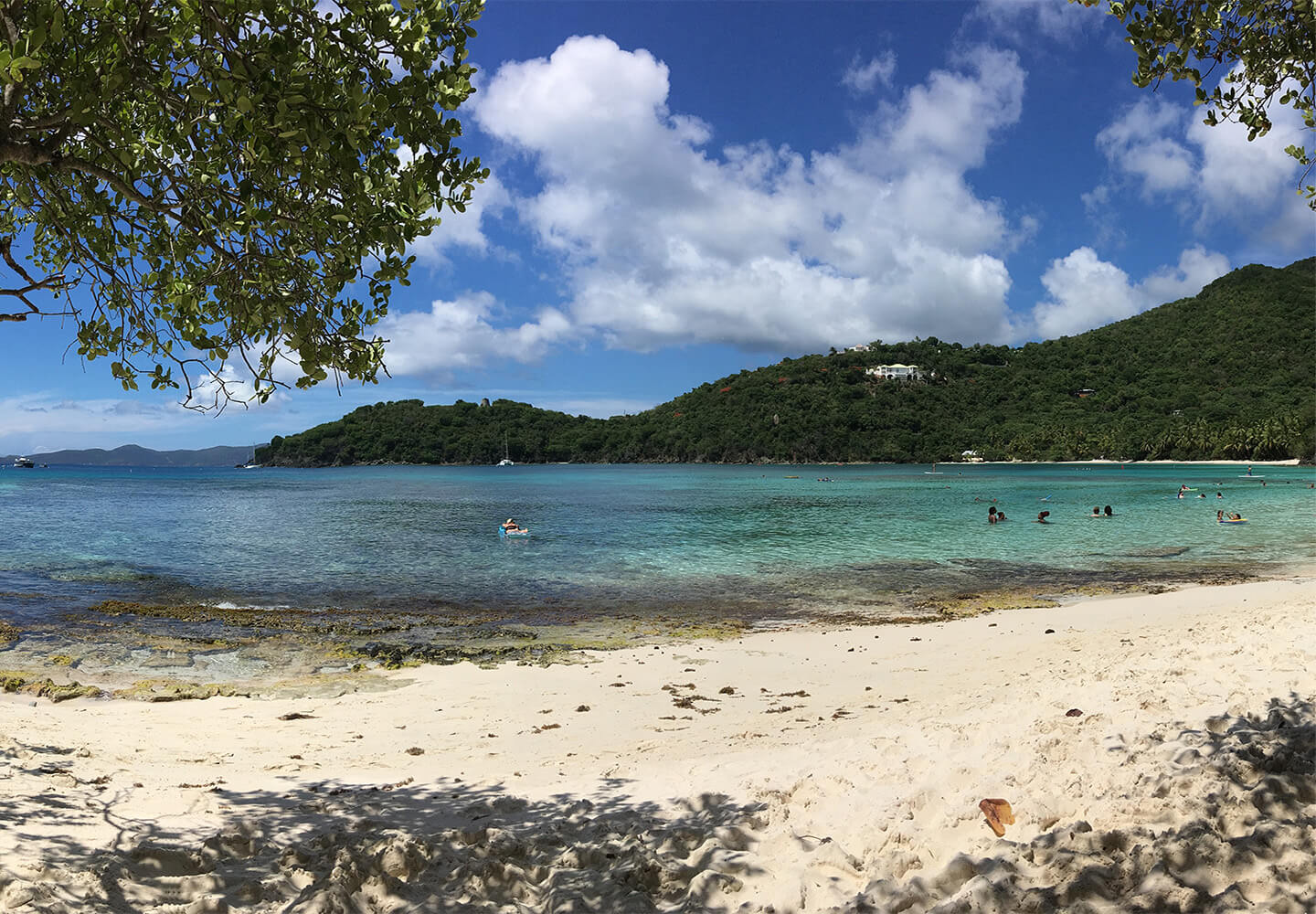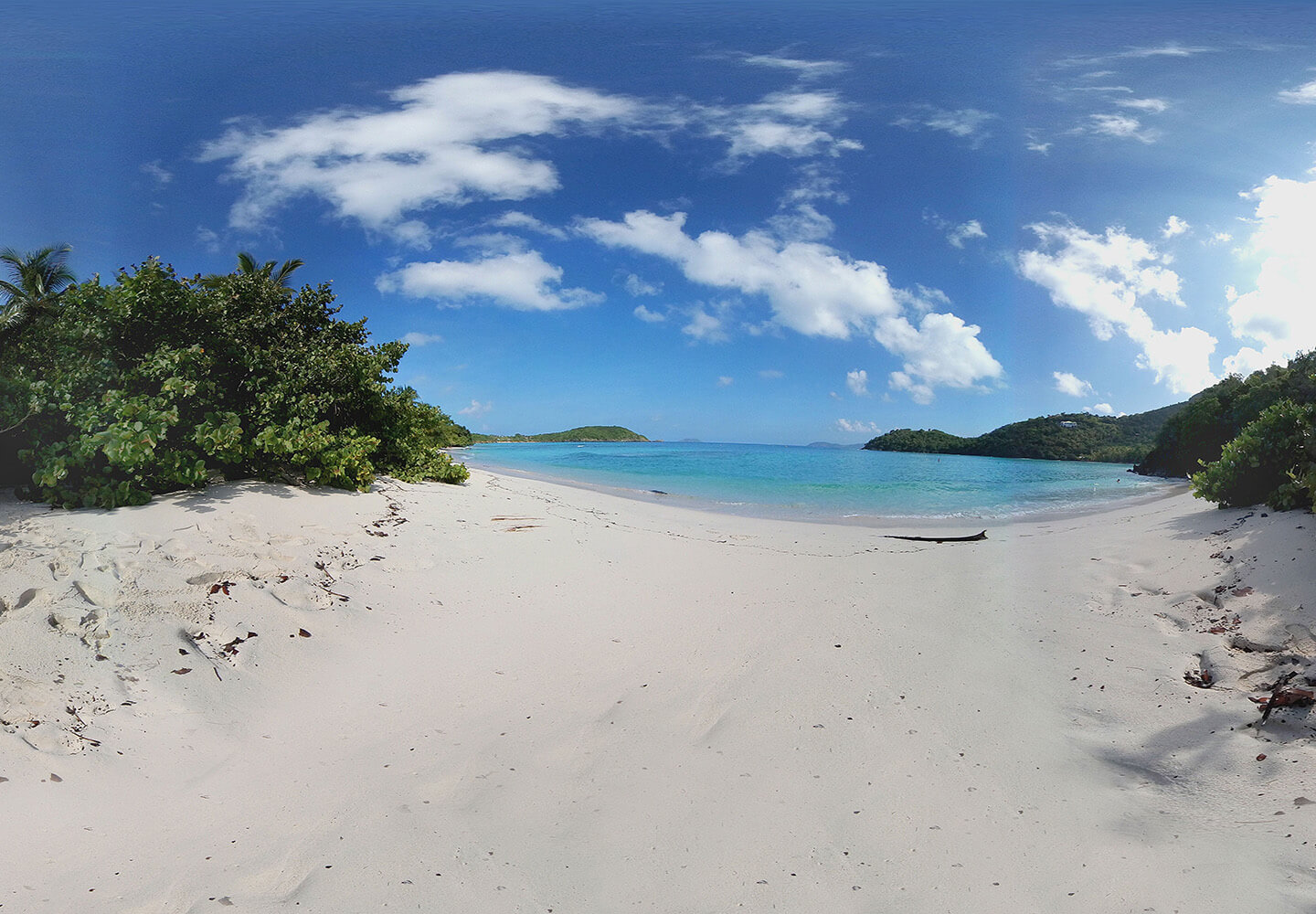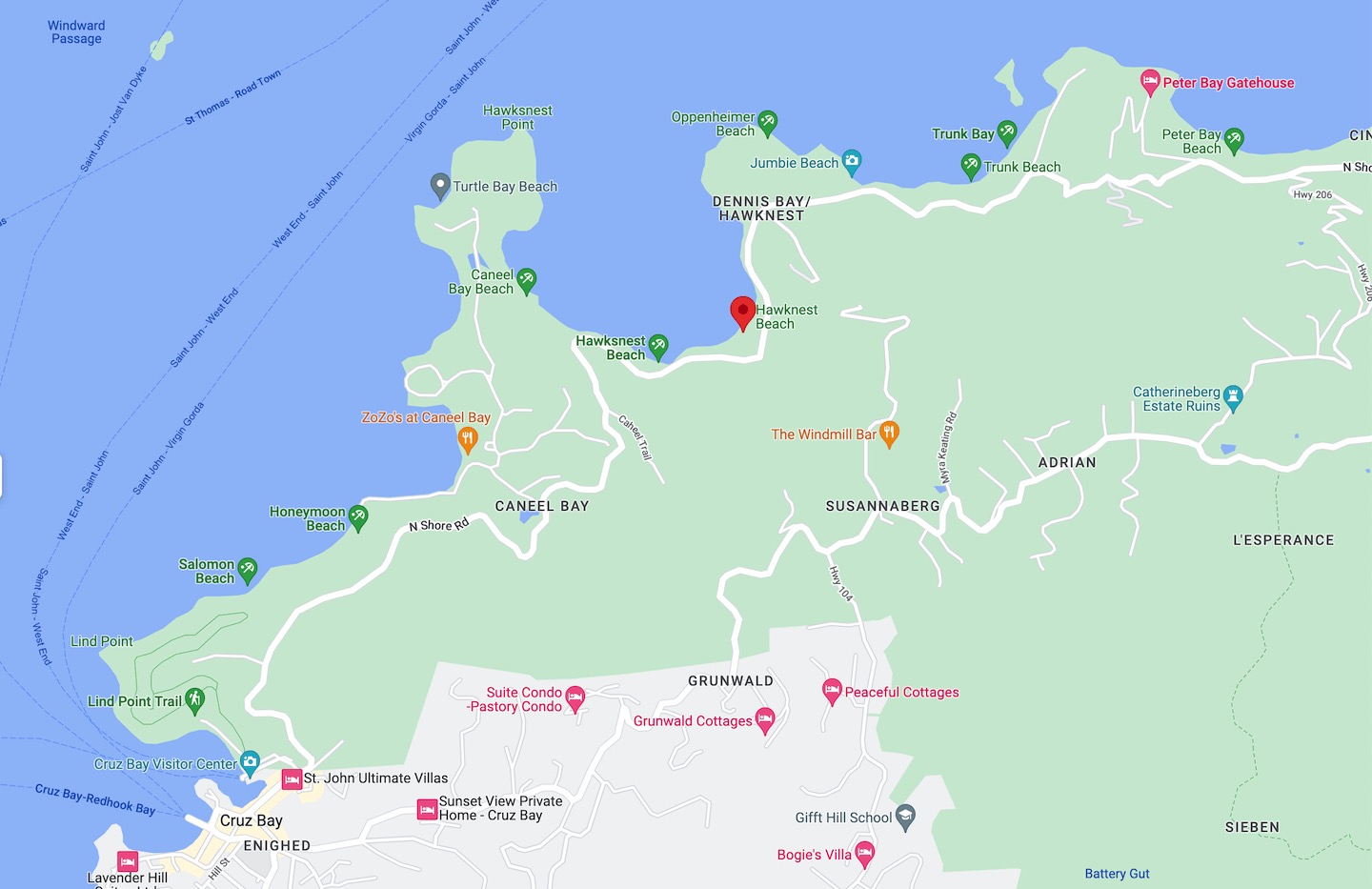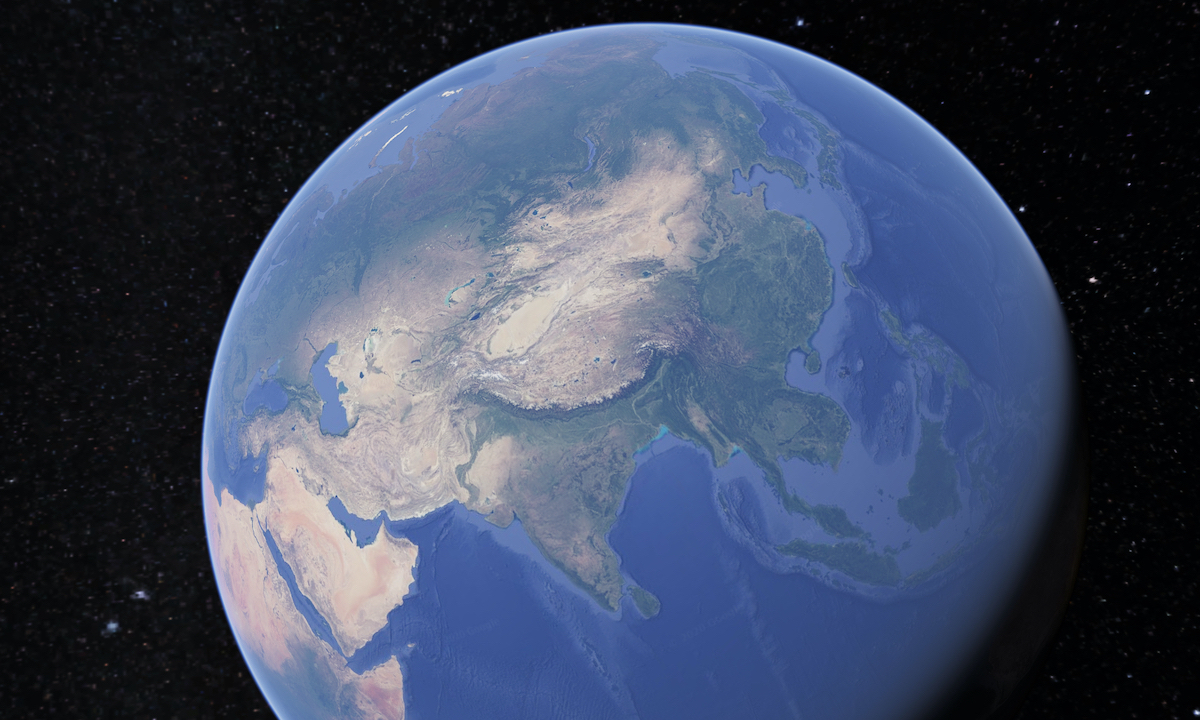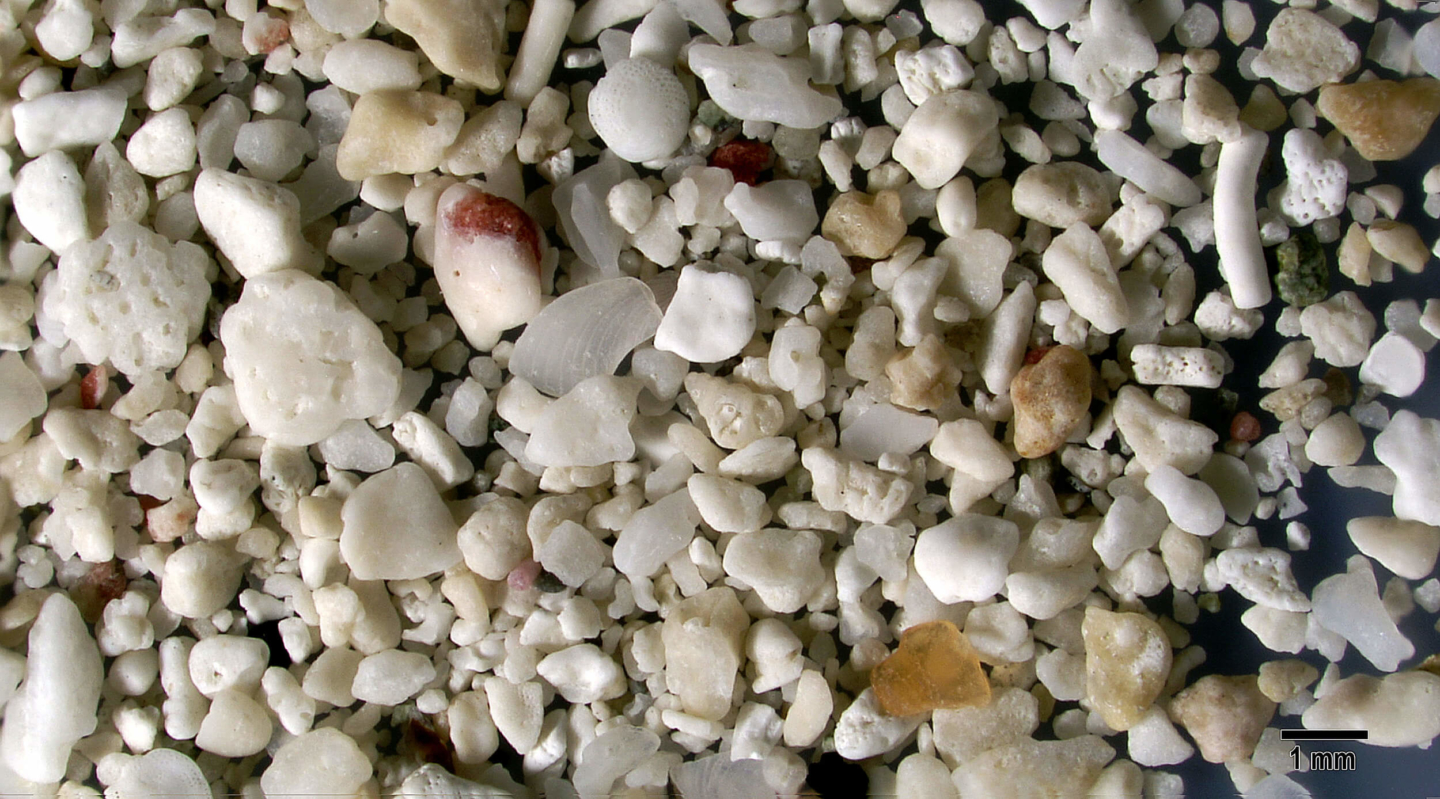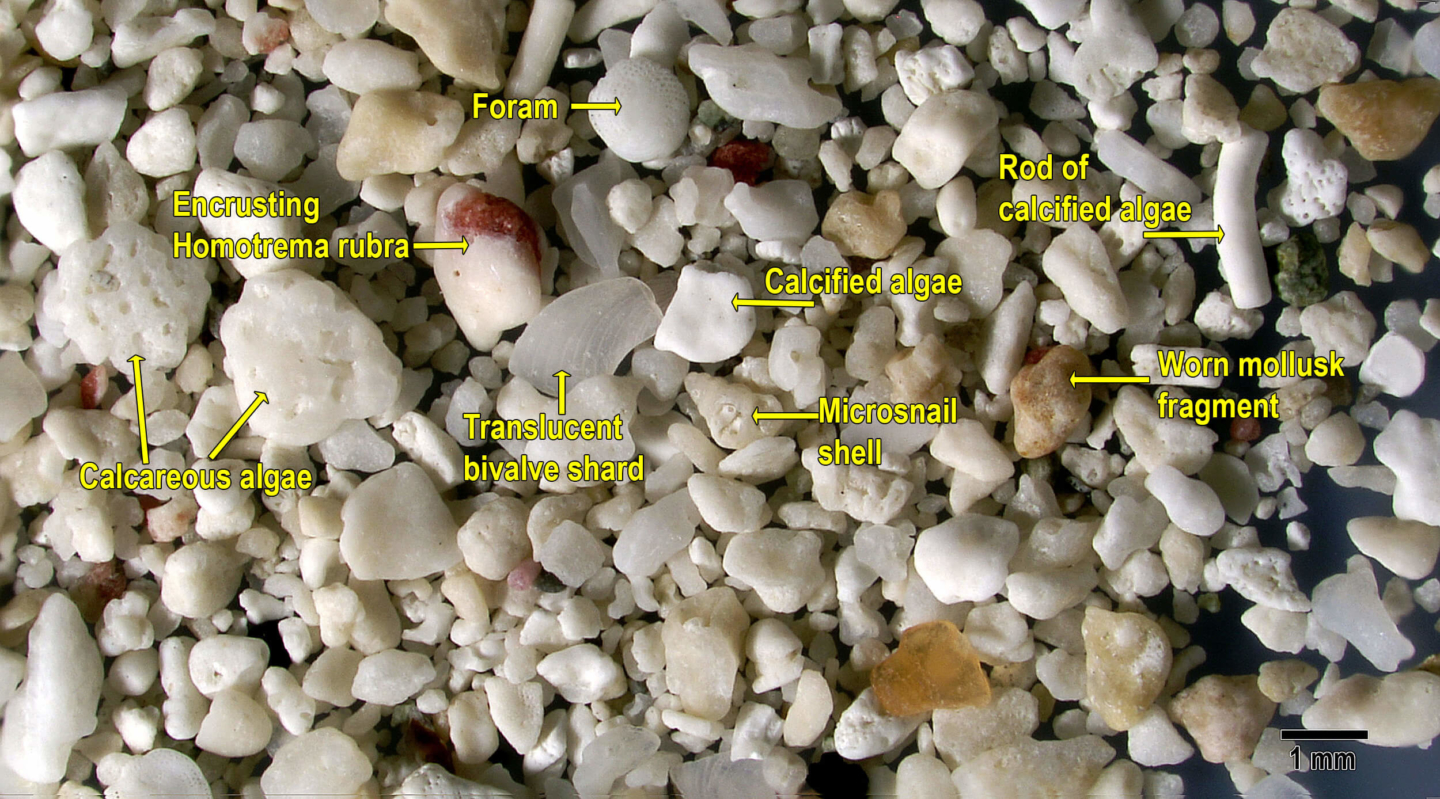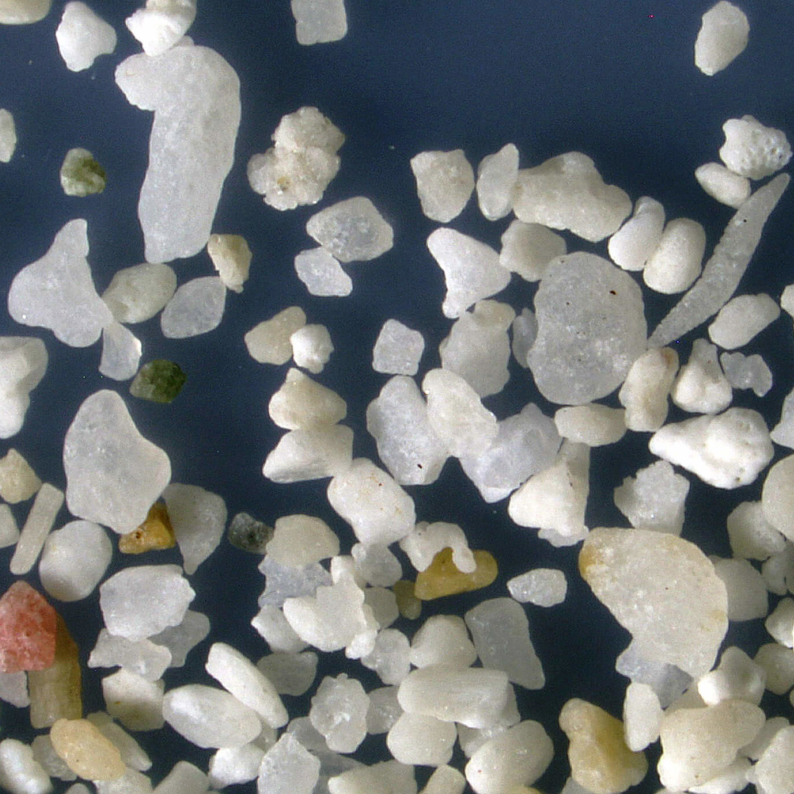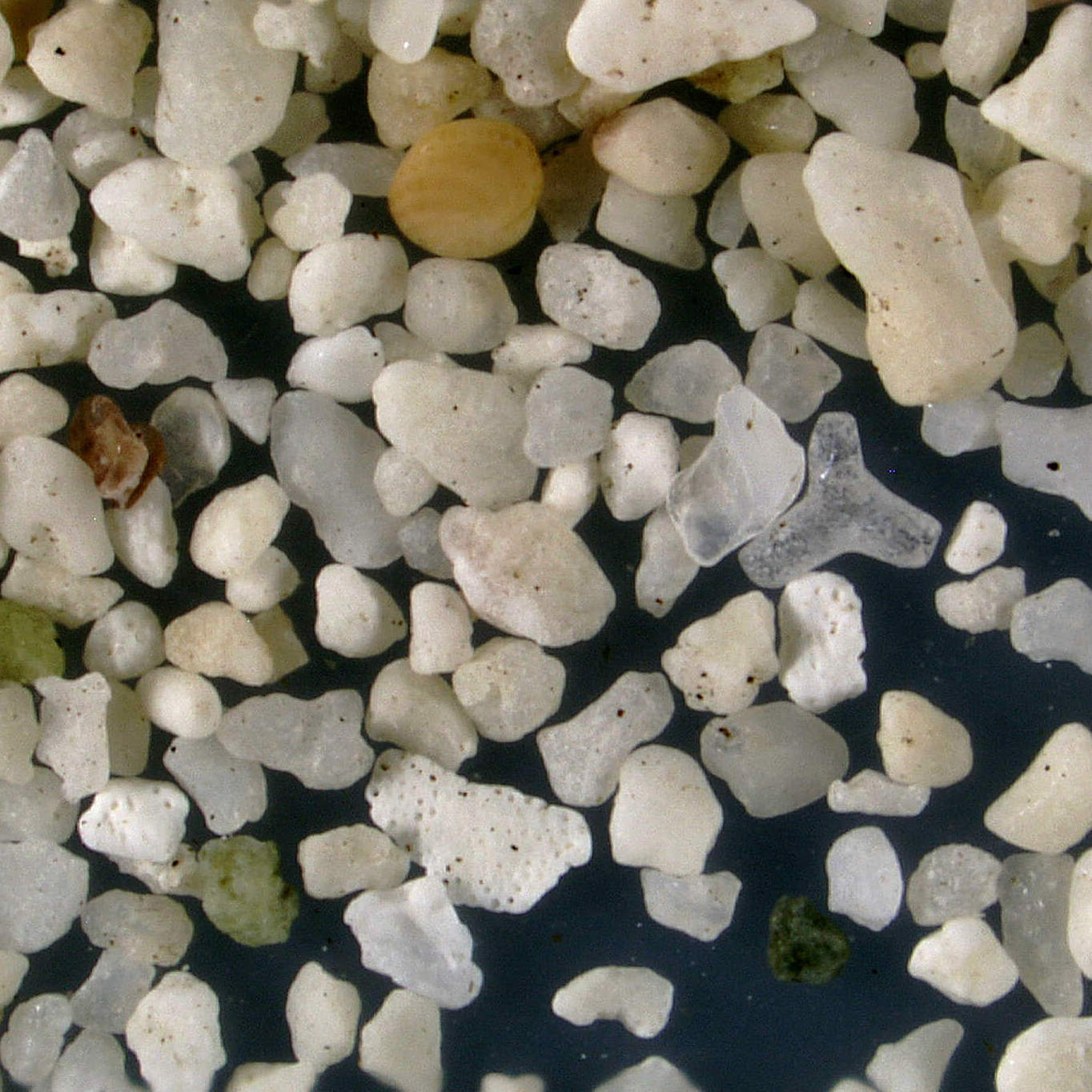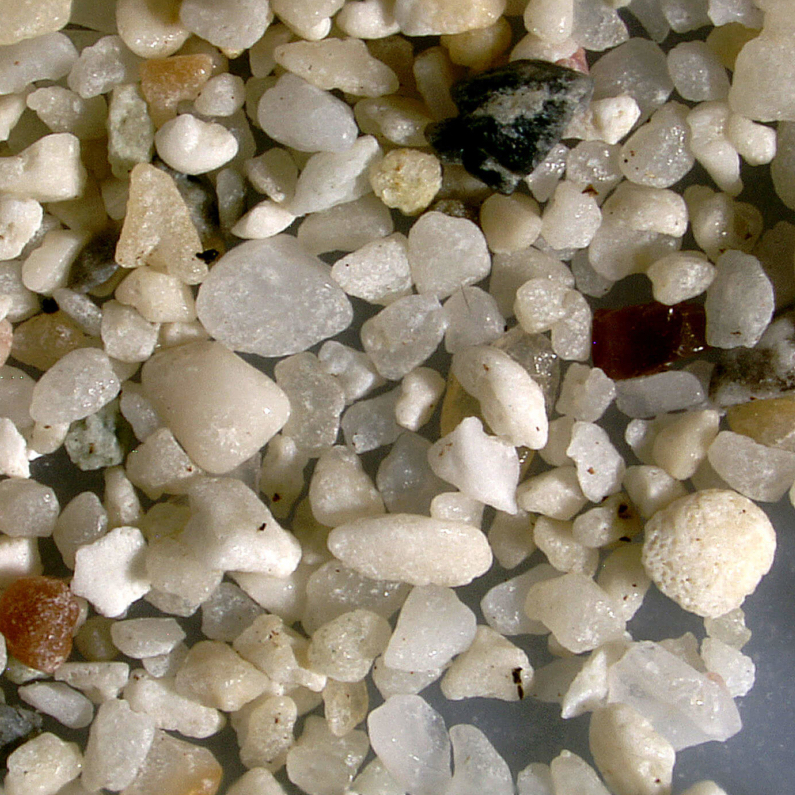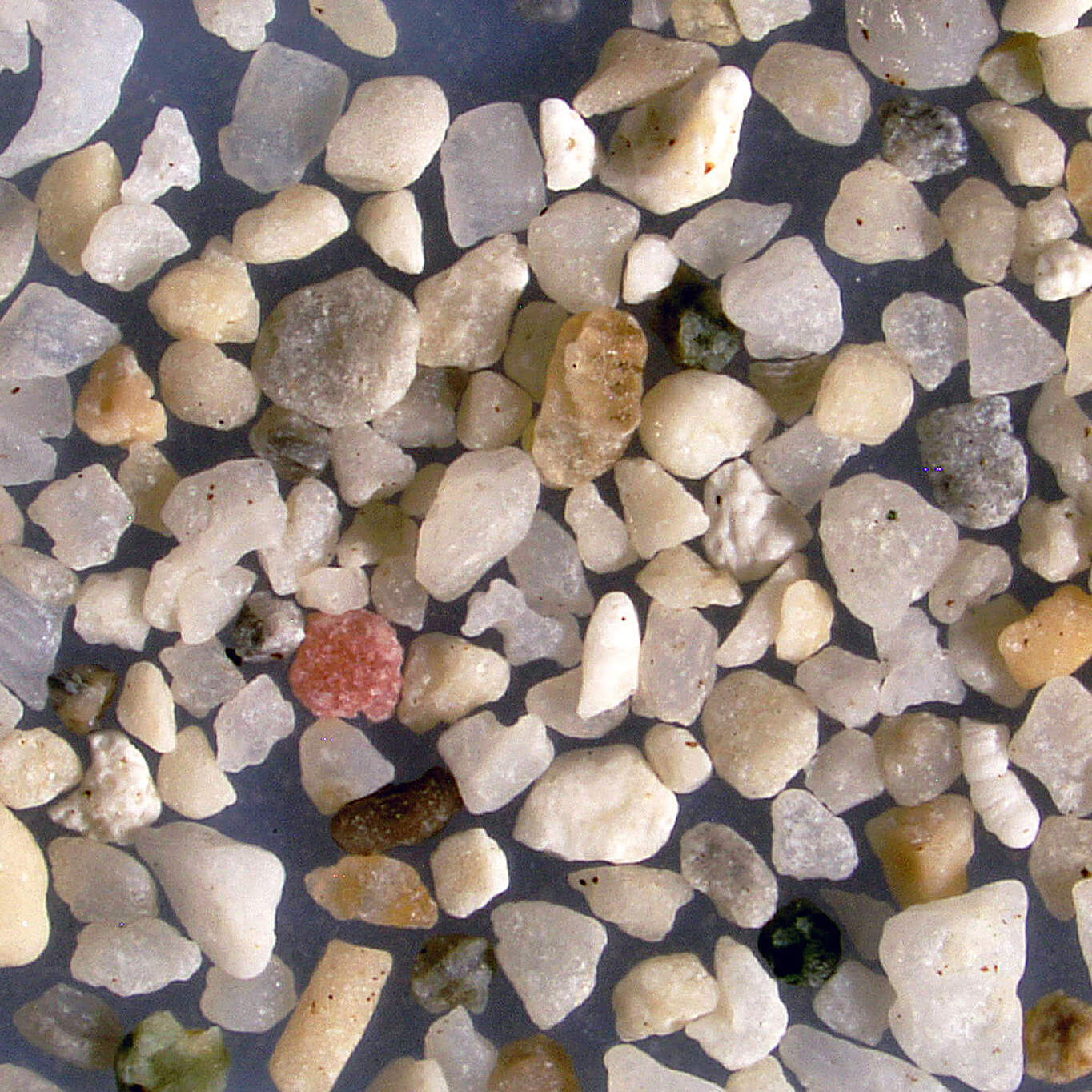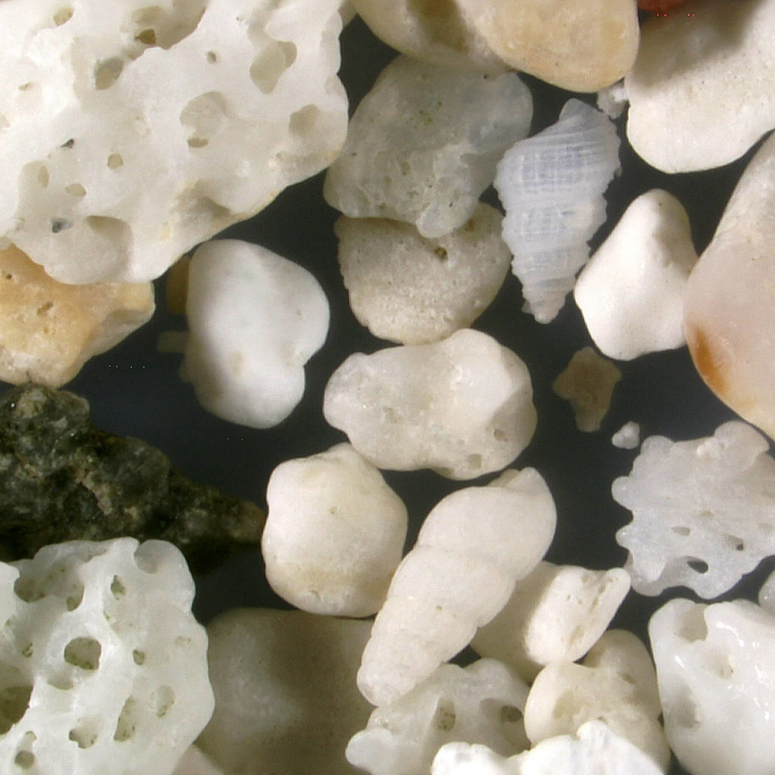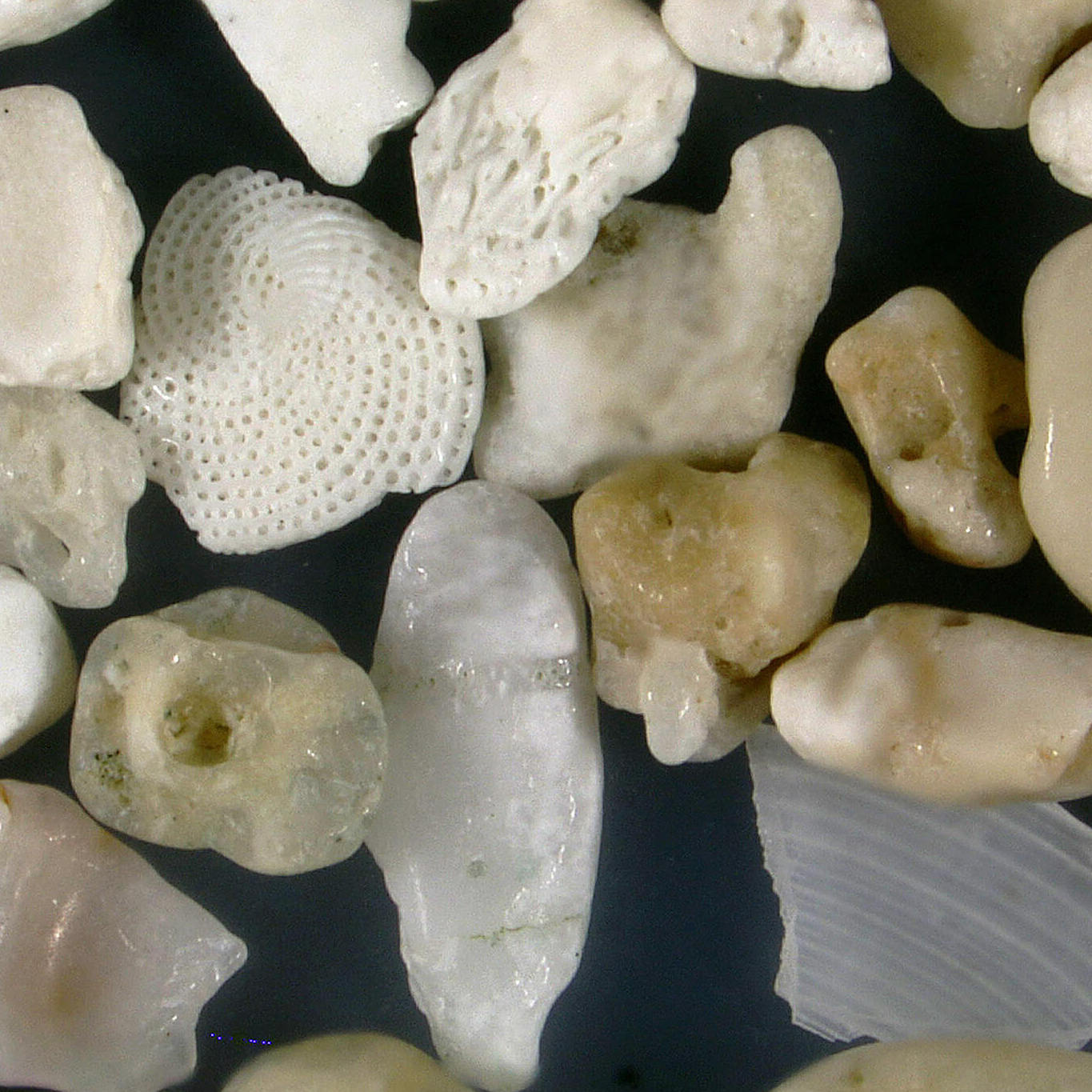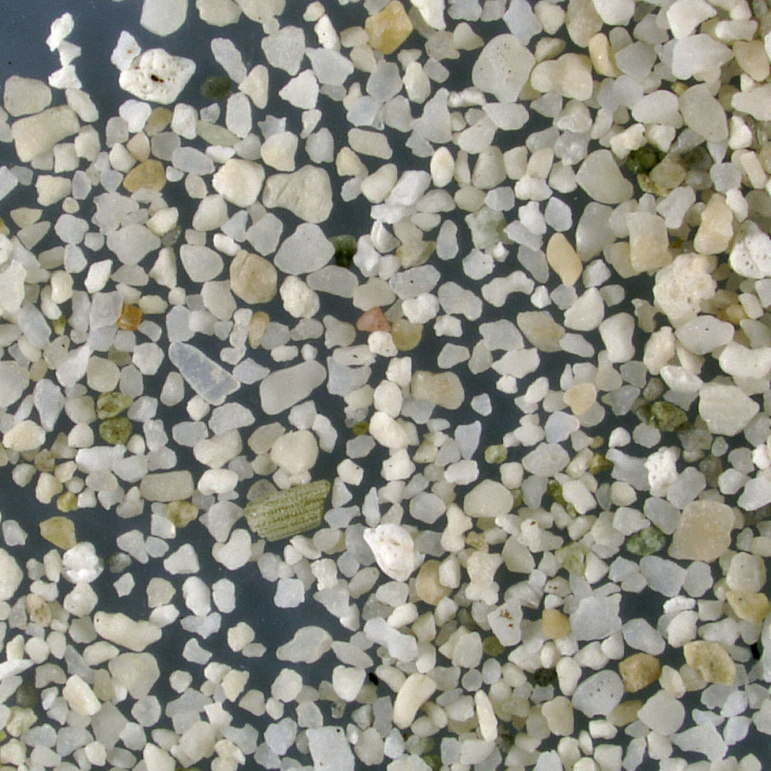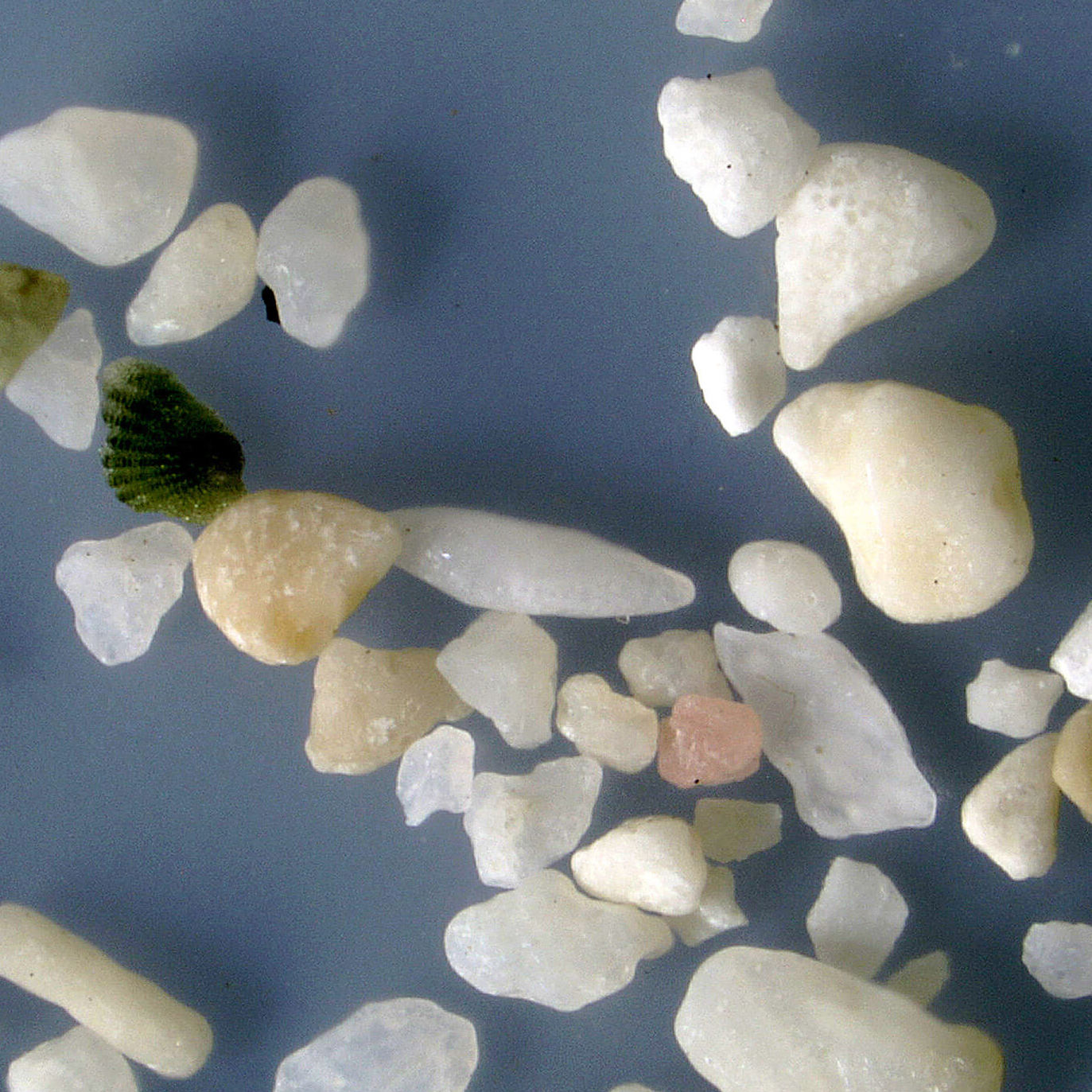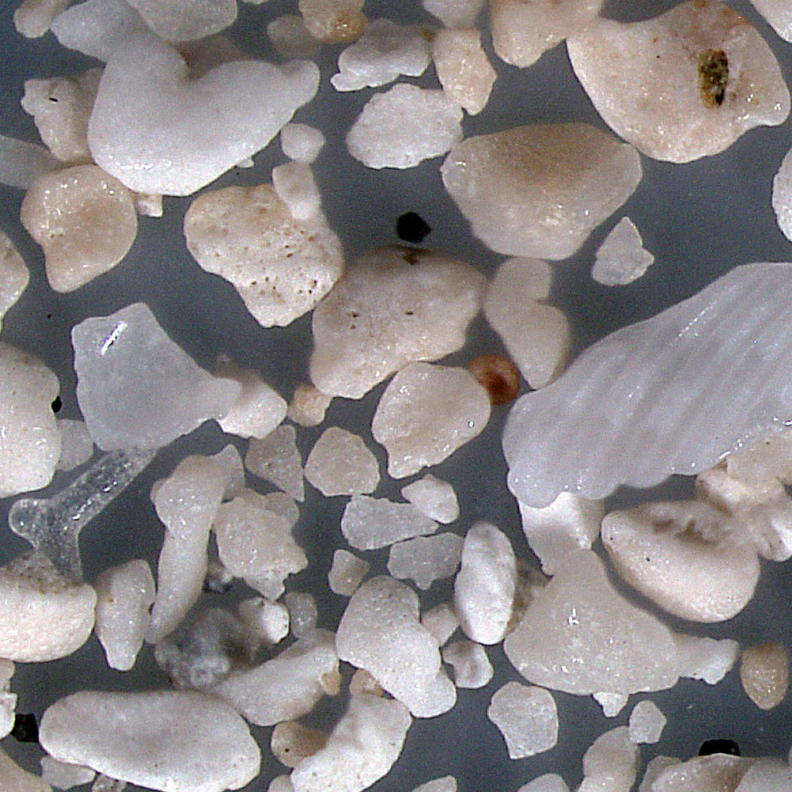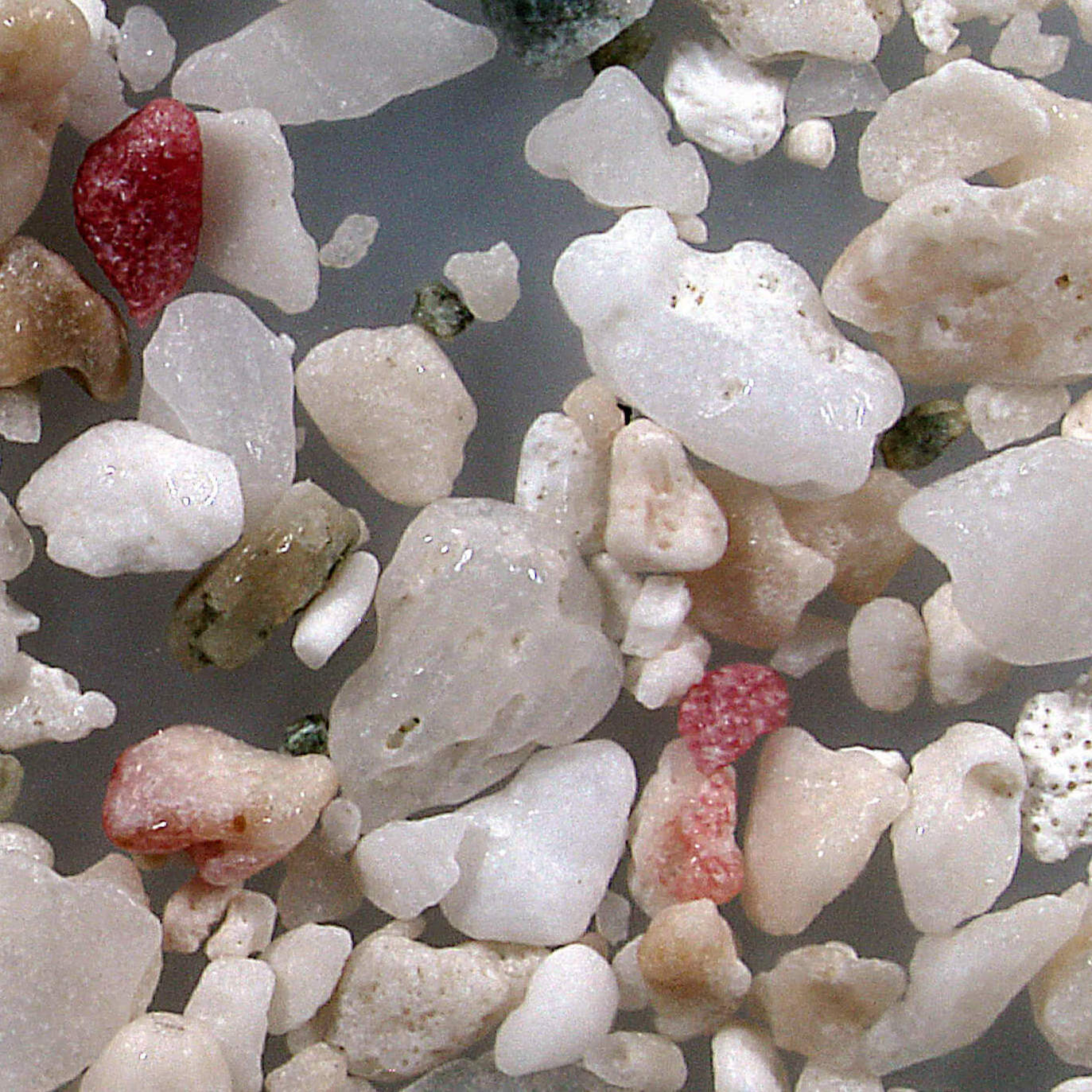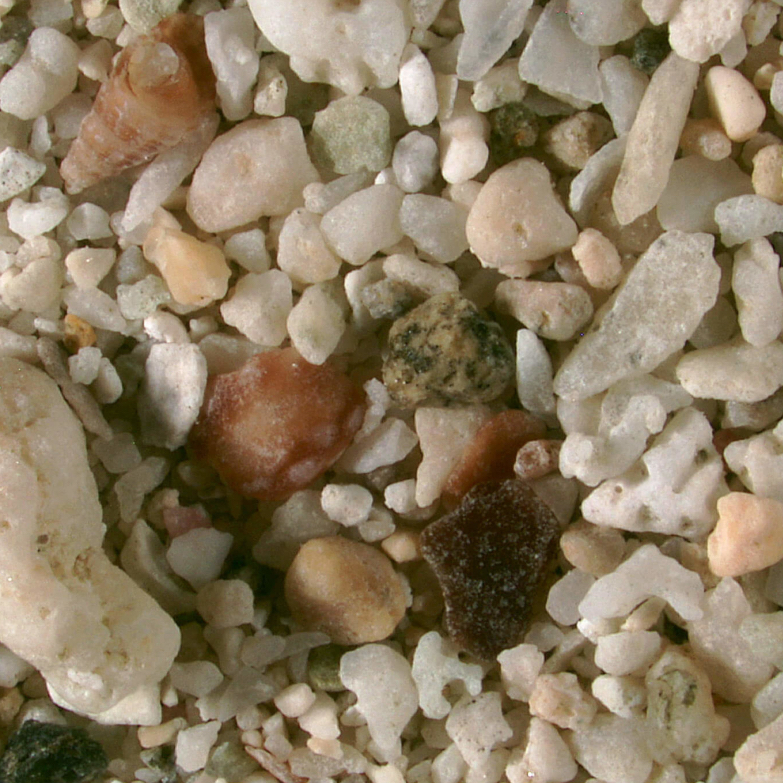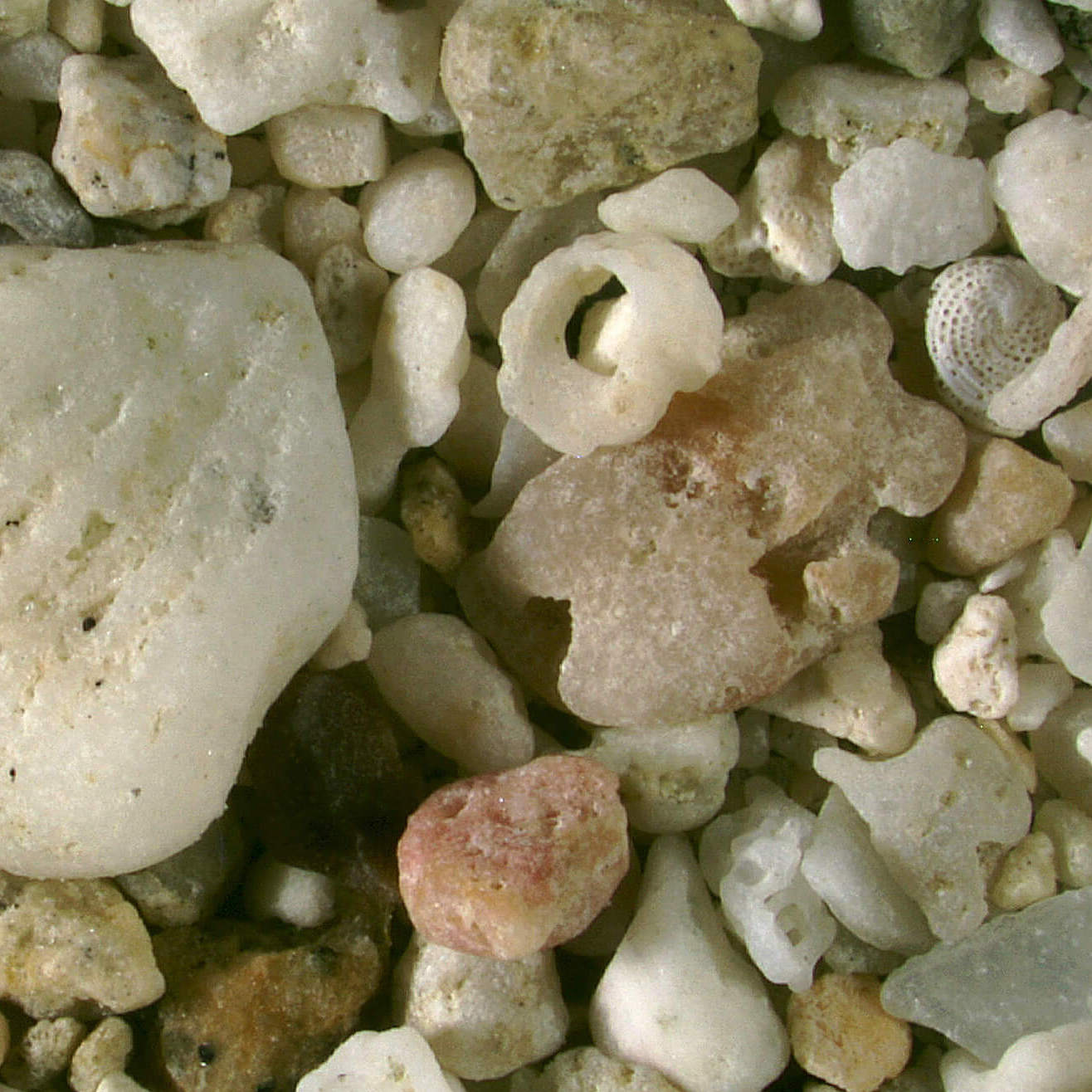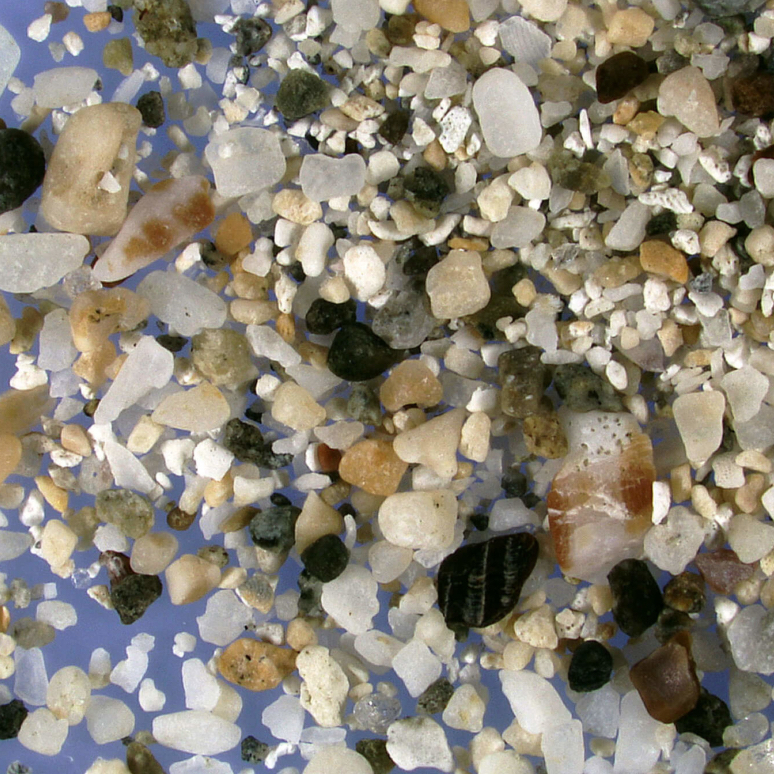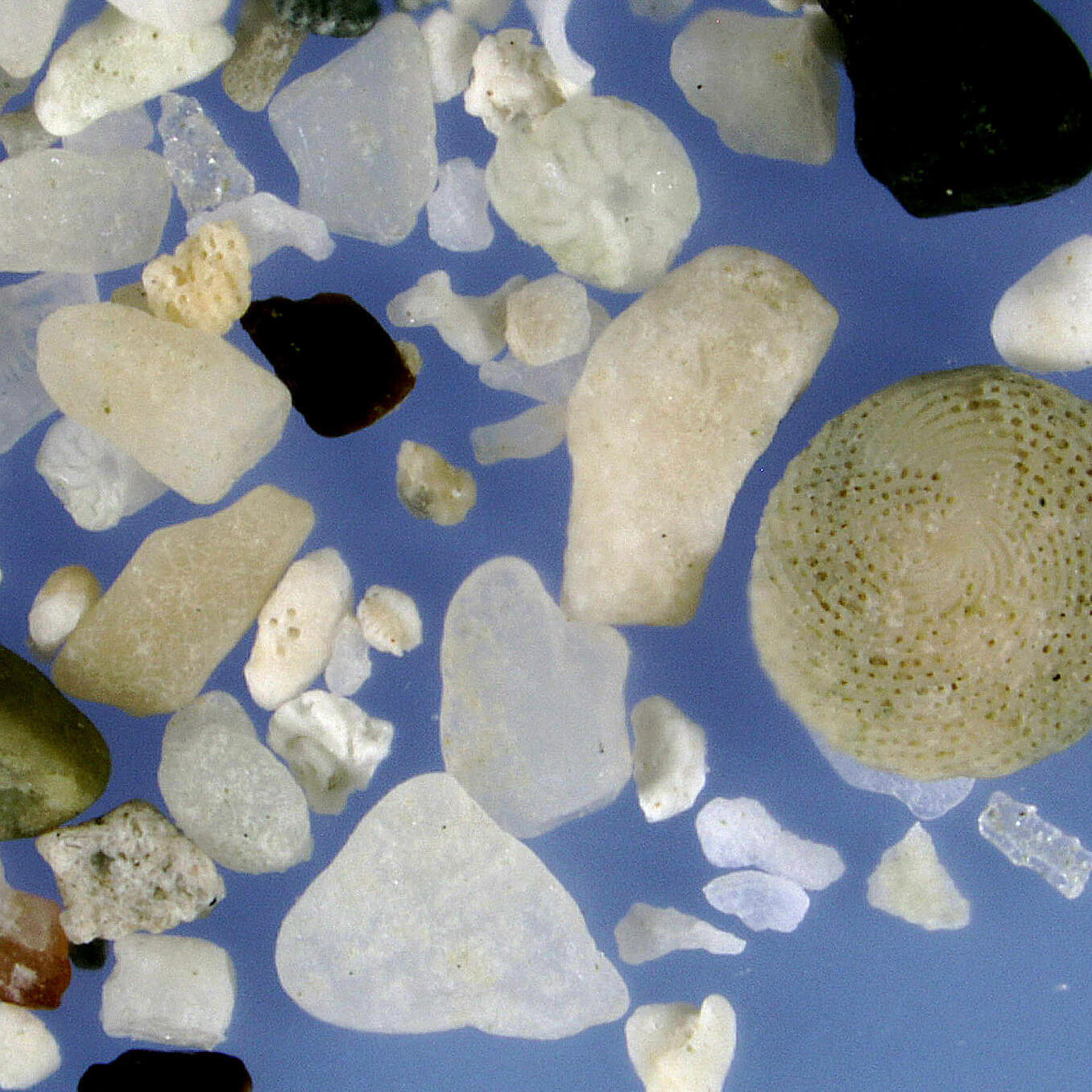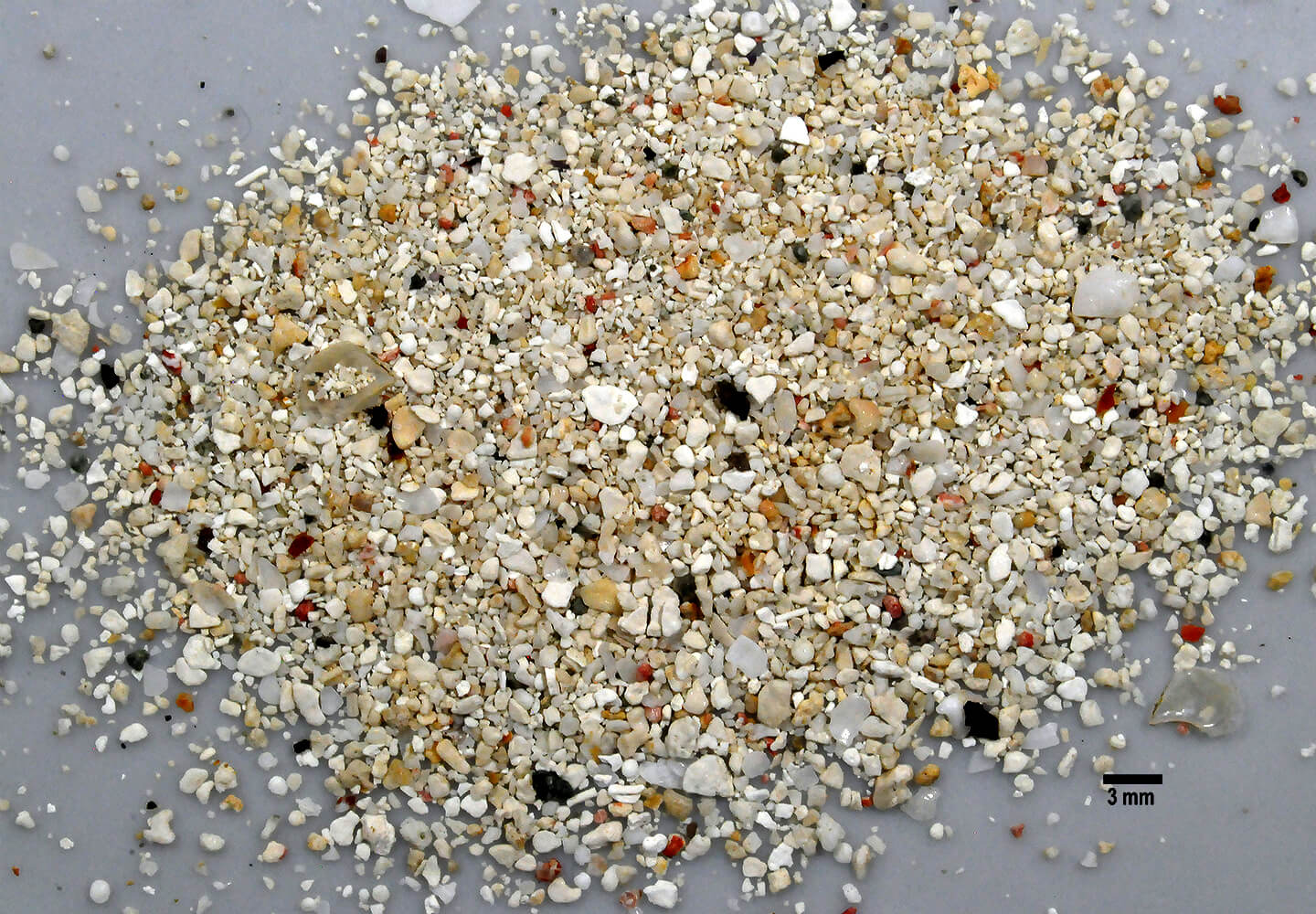
Although St. John is a volcanic island and part of a submarine mountain range extending from Cuba to Trinidad, sand on recreational beaches is primarily biogenic. Occasional black sand grains of volcanic origin are intermixed with a variety of white, tan, and reddish-brown grains of mollusks, white calcium carbonate skeletal remains of bleached coralline algae and other shell fragments.
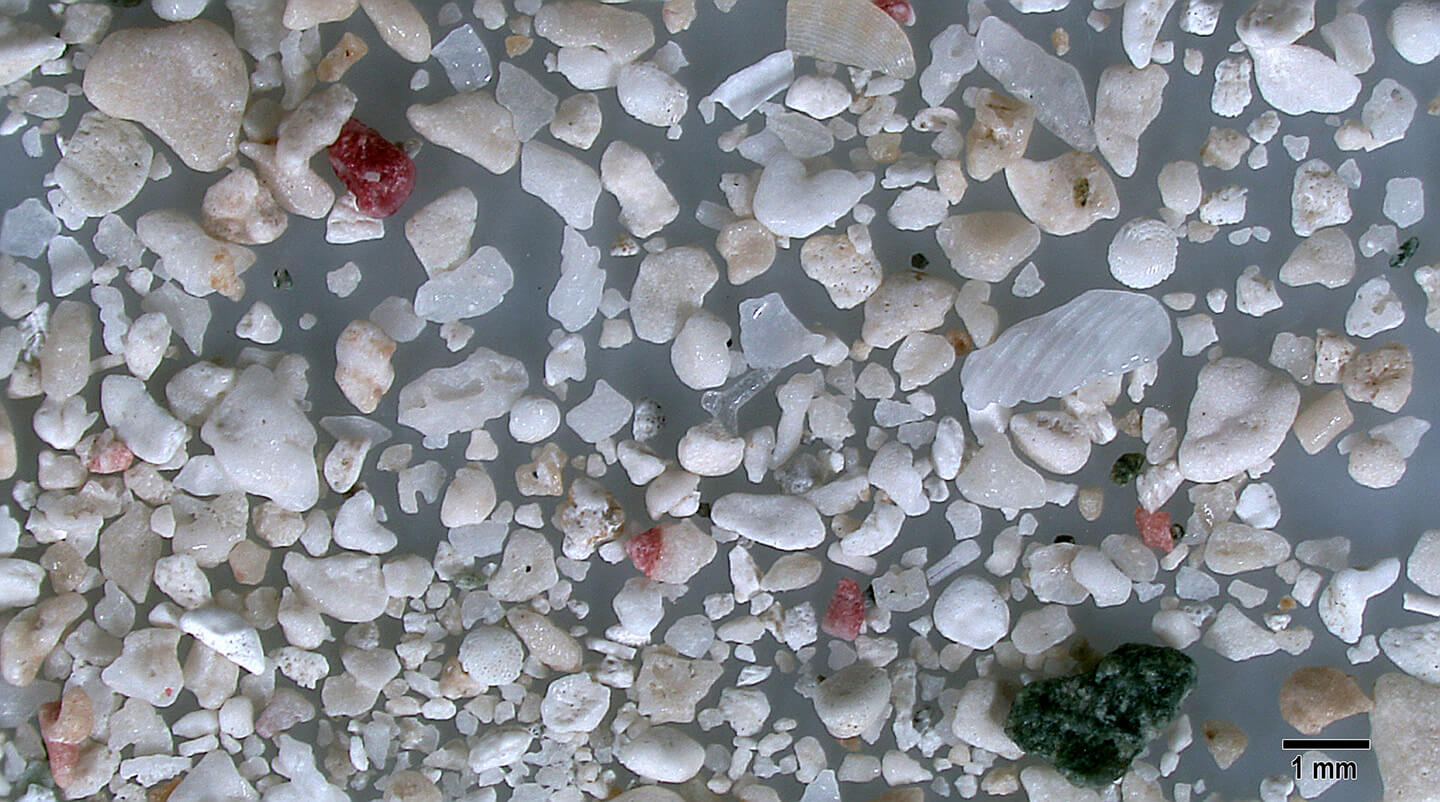
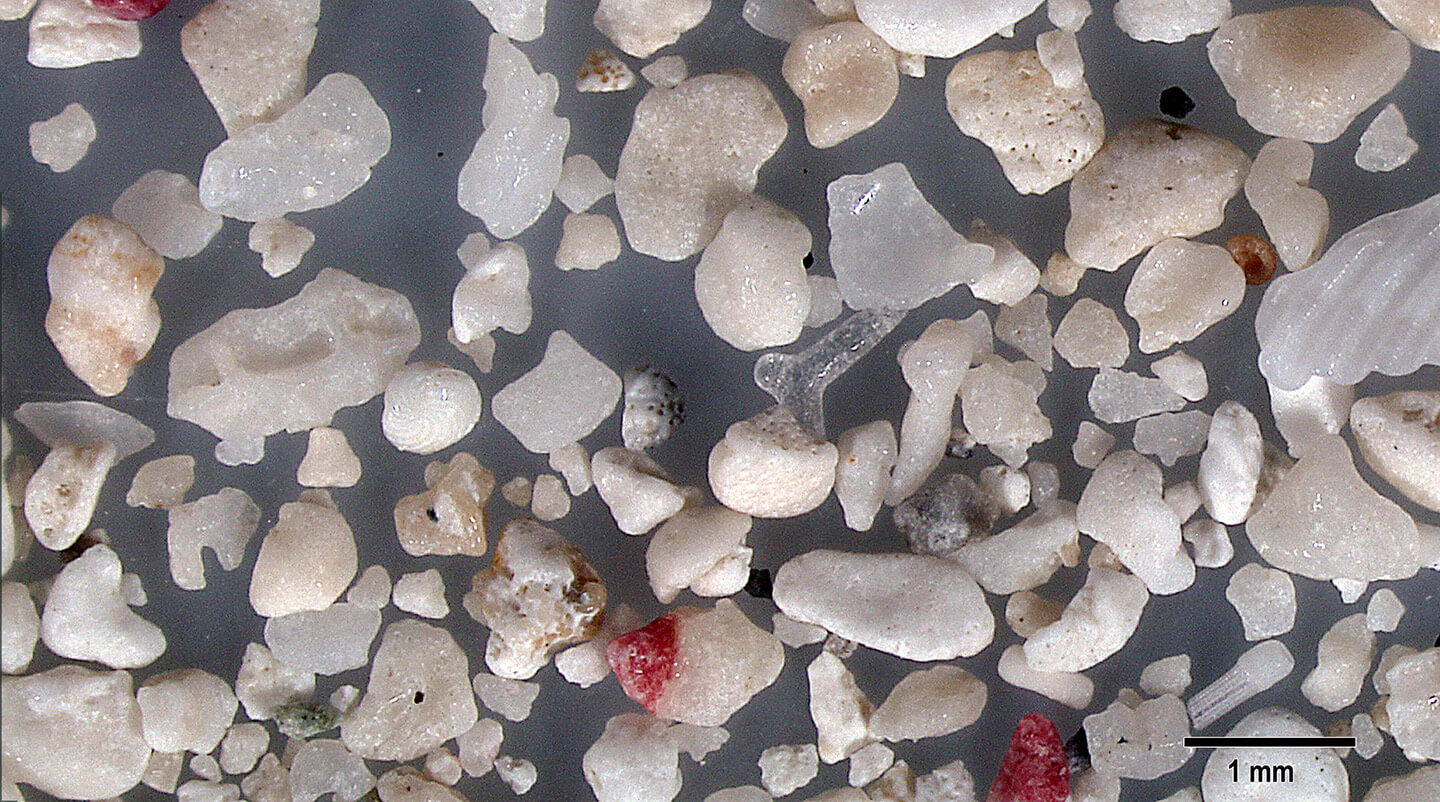
The low magnification has a sponge spicule fragment in the center and the larger rectangular translucent sand grain to its right shows parallel grooving marks of this mollusk shell. A bright white circular foram is just above the rectangular mollusk shell and a dark volcanic sand grain lies at the bottom right edge. In the higher magnification the central sponge spicule is prominent, red coralline algae are at the bottom and a sea urchin spine fragment lies just above the 1 mm scale bar at the lower right.
Geographic Overview
Only 9 miles long and 2 miles wide, St. John boasts of lush emerald mountains, hills and valleys without many flat areas, and soft white coral sands on numerous near-deserted tranquil beaches. The coast has coral reefs full of sea life with coastal areas characterized by many protected bays. Approximately 60% of the island is the protected Virgin Islands National Park, administered by the United States National Park Service.
Sand Gallery
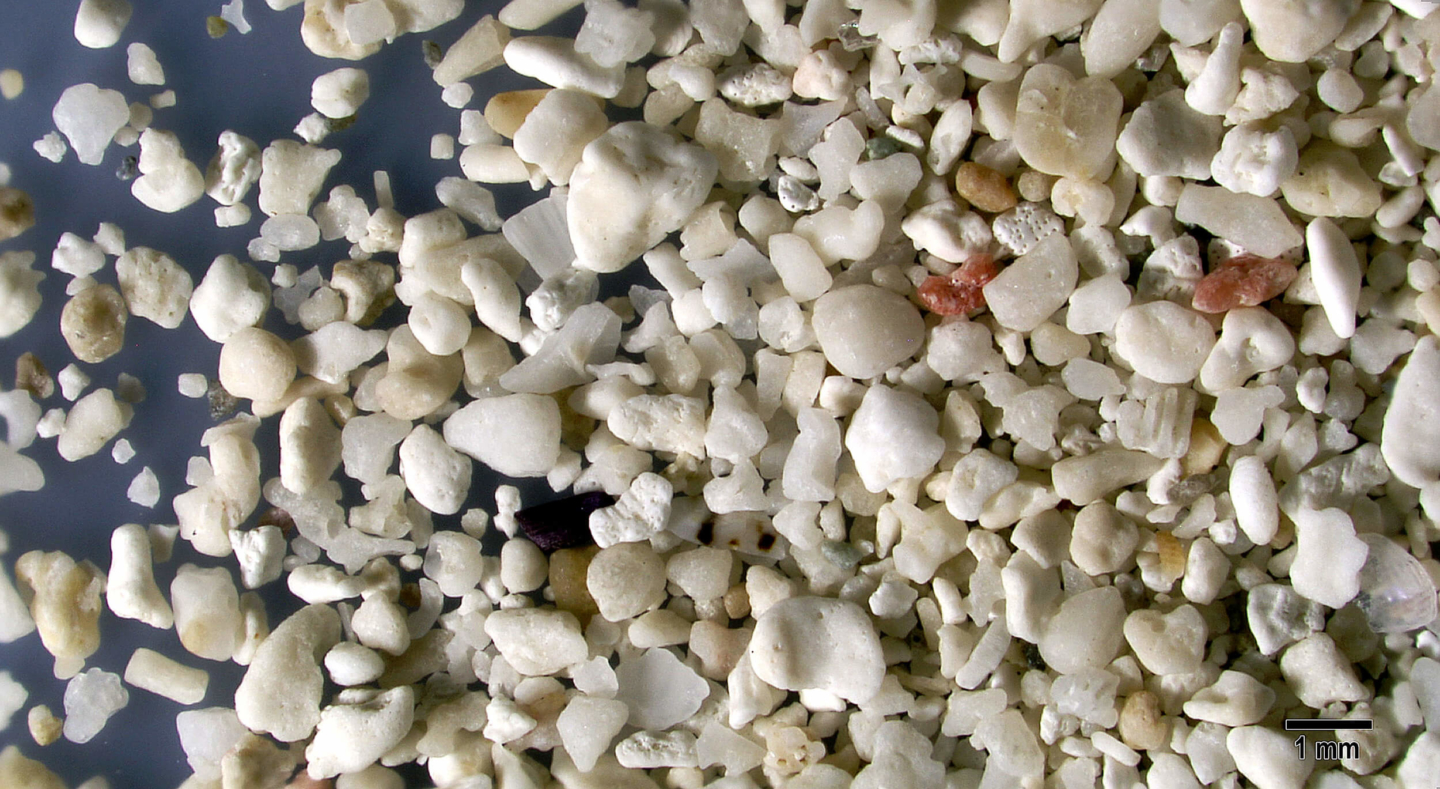
This mixture of white and tan sand grains includes grooved fragments of mollusks and fragments of calcareous algae and smoothly worn forams. The red grains are fragments of the foraminifera Homotrema rubra.
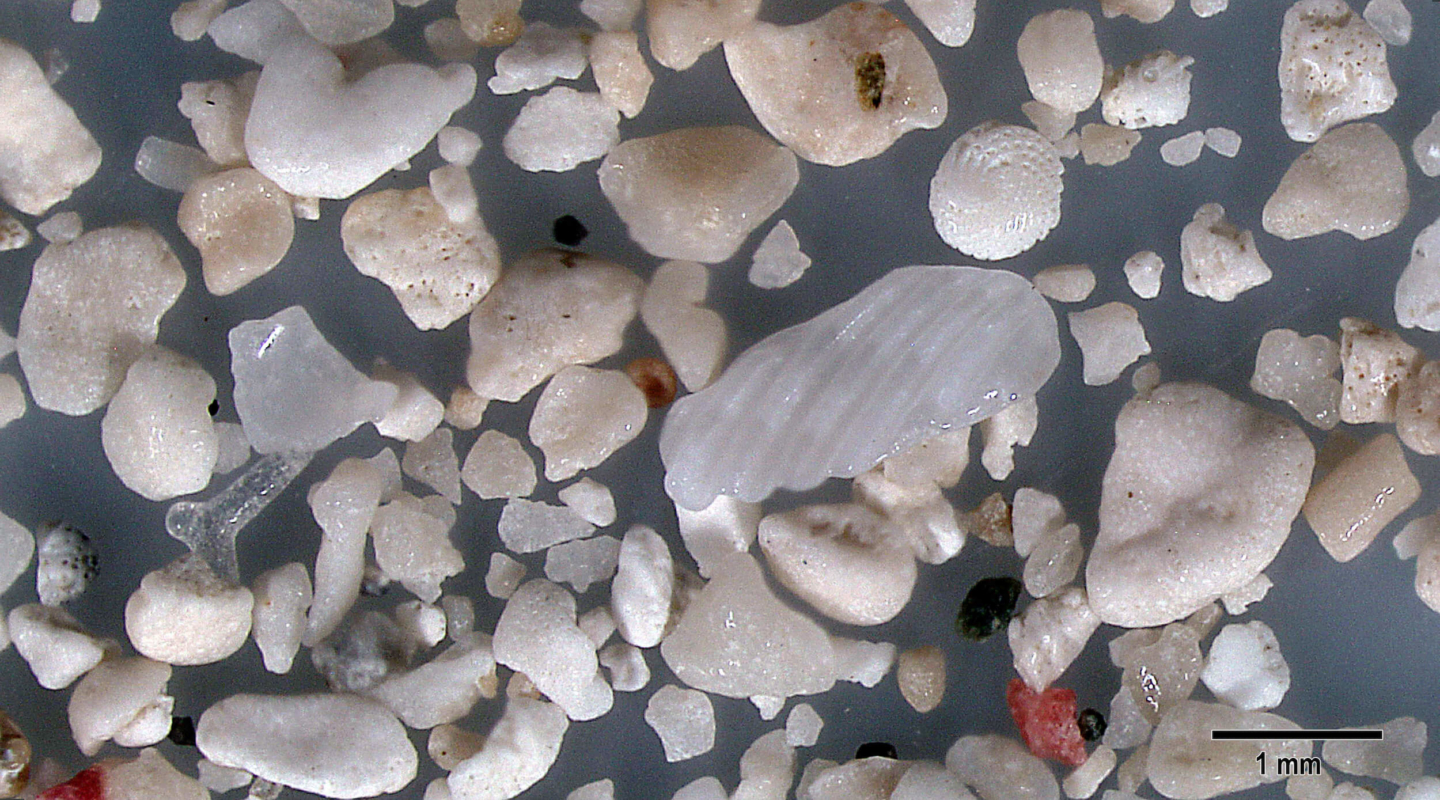
The larger translucent sand grain in the center displays the parallel groove markings of a mollusk. A nicely preserved bright white foram is just above the mollusk shard and a bright red sand grain of coralline algae is near the bottom edge. A transparent sponge spicule fragment is on the left just below middle. Remaining sand grains are fragments of coral and bleached marine algae.
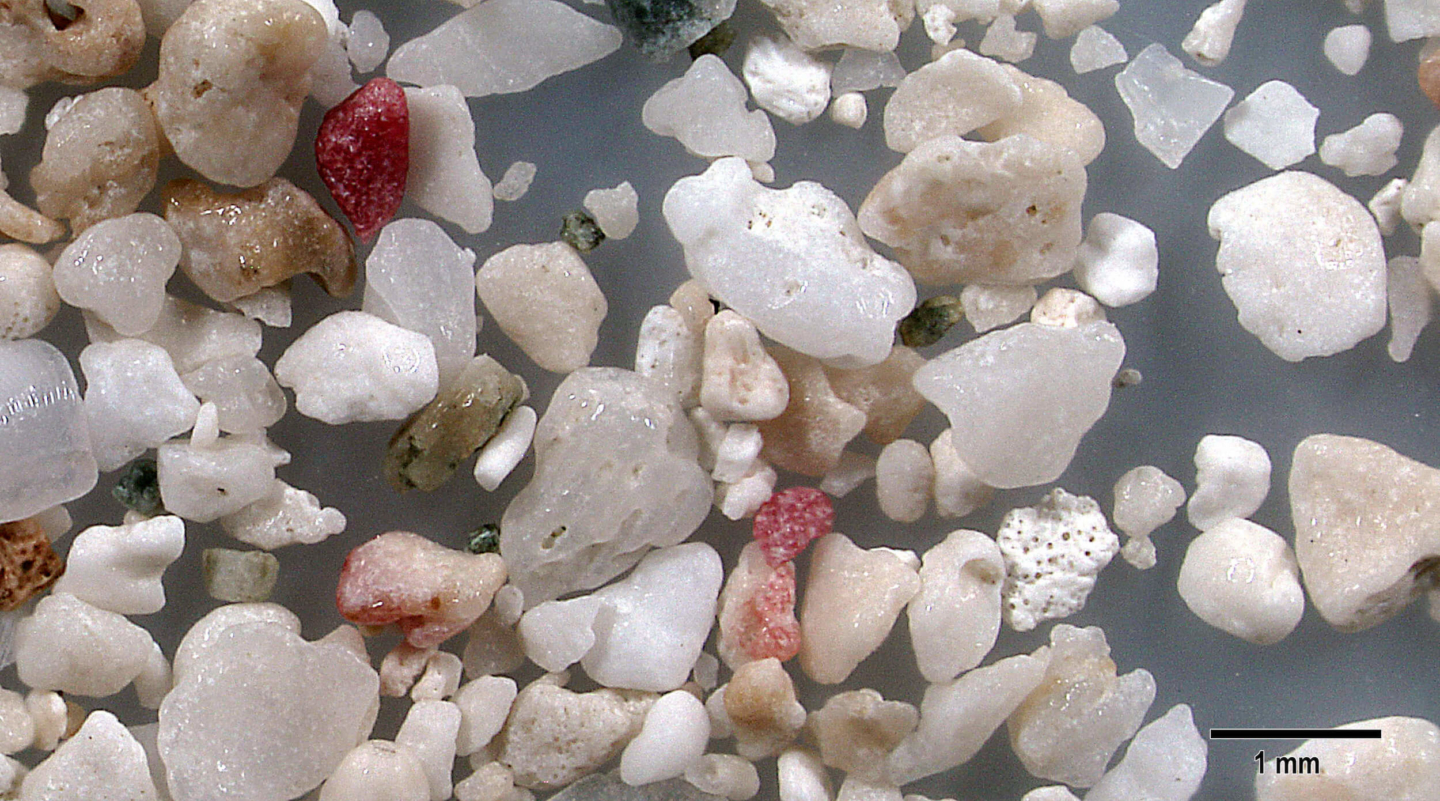
Fragments of red coralline algae are prominent in this mixture of translucent sand grains and bleached fragments of calcified algae and coral.
In this mixture of biogenic sand a bright white sand grain in the center, the calcium carbonate remains of a calcareous algae (calcified algae), is immediately above a micomollusk snail shell (microsnail shell). A translucent mollusk fragment with linear striations is to the immediate left of center (translucent shard) and next to a red encrusting coralline algae (encrusting Homotrema). A white circular sand grain with parallel tiny openings at the top center is the skeleton of a foraminifera (foram).
